COVID-19 screwed your MEL plans? What next.
It might be the least of your worries in this time of COVID-19, but measurement, evaluation and learning (MEL) has a crucial role to play to help organisations adapt.
Understandably, in these last few weeks many social change and government organisations have been focusing on emergency response activities – moving their programs online, offering previously face-to-face services over videoconference or text, and making sure their communities don’t fall through the gaps as services pivot.
But as we settle in for the long haul, now’s the time to turn your attention back to those MEL plans that have gone out-of-date in the space of weeks. Focusing on MEL in a time like this can help you to ensure the changes in your organisation’s operations are still aligned to your broader goals. Or if needed, it can help you re-evaluate those goals entirely.
This is the first of a series of blogs that will explore exactly why MEL is so useful not just in ‘peacetime’, but also during this prolonged global crisis, where planning more than a few weeks ahead seems about as useful as sunbathing on a crowded beach.
In the following posts, we’ll take a more in-depth look at topics such as using M&E to adapt to COVID-19 in international development, why strategic learning is important for leading in complexity, and how to use Theory of Change to reorient your programs.
But in the meantime, here are some ways you can start to refamiliarise yourself with that MEL framework you might have left in the dust at the start of March.
What to do with that out-of-date MEL framework?
- Update the frequency and content of reporting. In the early days of a crisis we know it is critical to get the right information to the right people. Find out what data is useful to people, and when, the update your reporting systems. The chances are you may need to provide more regular information for a while at least.
- Revisit your Theory of Change. Update it with your activities being done online and look at what this does to your impact pathways and assumptions. You can use your Theory of change like a canvas to explore positive impact pathways under these new conditions.
- Update your intermediate outcomes. You may need to be adding new short-term outcomes such as immediate relief, stress levels, material safety, or knowledge of new government benefits.
- Update your measures where needed. Instead of tracking attendees at a session you might instead track the number of online visits, chats, etc.
- Reconsider your data collection methods. You may need to move to more qualitative methods during this phase of COVID-19 because life for many in vulnerable situations maybe changing so rapidly that there will be many unintended outcomes that your service will contribute to. Use Most Significant Change method or another method to solicit what is changing and how your service has contributed to those changes.
- Think about automating data collection. Going online with your programs offers a world of automation opportunity. If you are offering some sort of chat response to your clients or a collaborative space, you can automate the attendees list. You can also send out small surveys that can be automated either through text message or, as we prefer for security reasons, sending people a Microsoft Forms link.
But a word of warning with privacy: make sure that whatever platform you are using to engage your clients is secure. You can read more about digital evaluation and privacy considerations here.
Stay tuned for the next blog post in this series.




